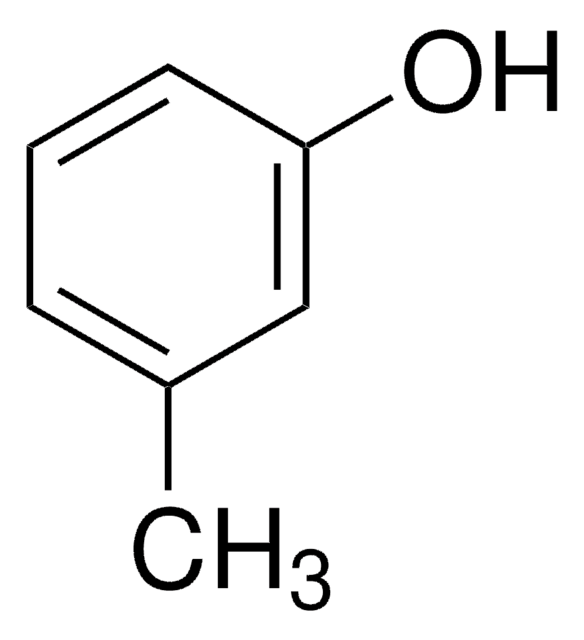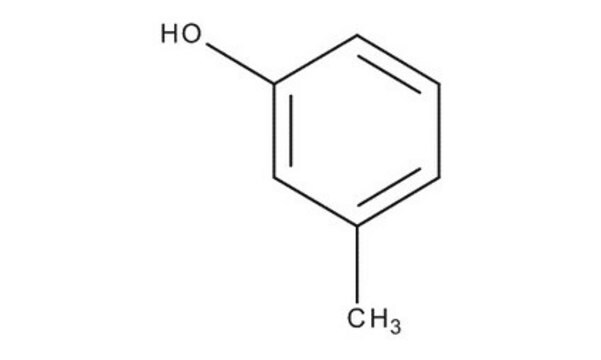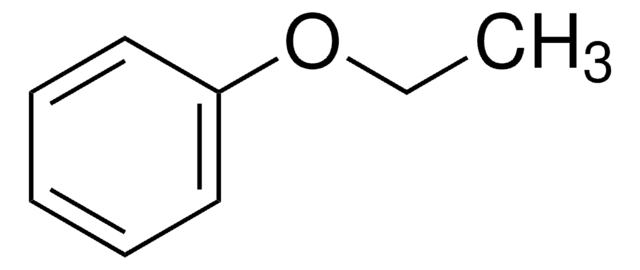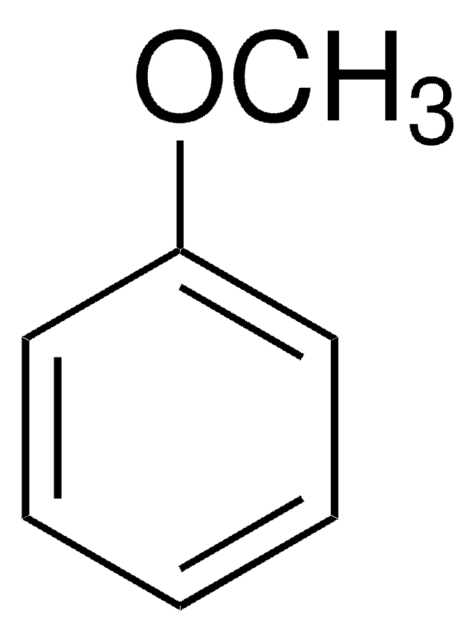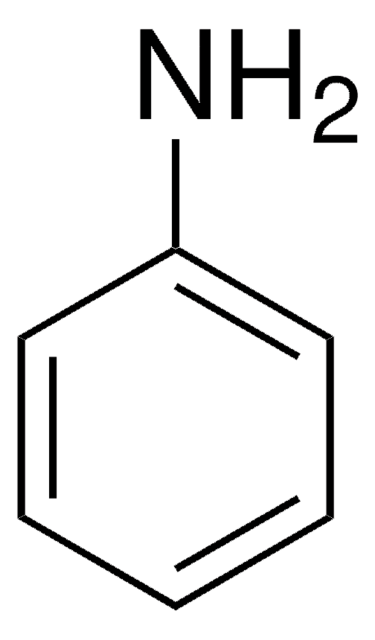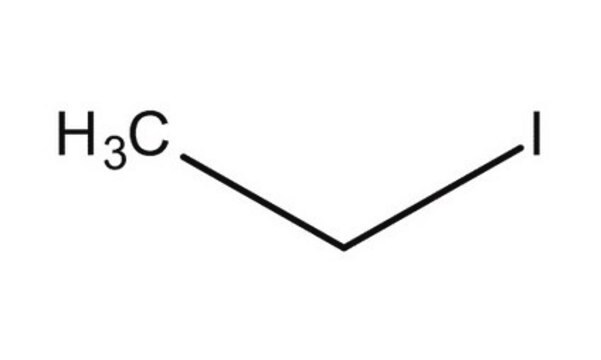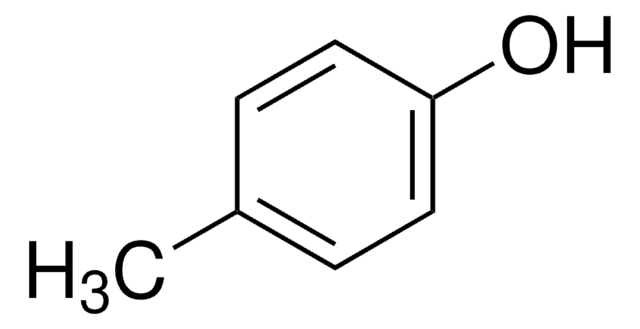Kluczowe dokumenty
442391
3-Methylphenol
analytical standard
Synonim(y):
m-Cresol, 1-Hydroxy-3-methylbenzene, 3-Hydroxytoluene, 3-Methylphenol
About This Item
Polecane produkty
klasa czystości
analytical standard
gęstość pary
3.72 (vs air)
ciśnienie pary
<1 mmHg ( 20 °C)
Certyfikat analizy
current certificate can be downloaded
temp. samozapłonu
1036 °F
granice wybuchowości
1.06-1.35 %, 150 °F
opakowanie
ampule of 1000 mg
metody
HPLC: suitable
gas chromatography (GC): suitable
współczynnik refrakcji
n20/D 1.541 (lit.)
tw
203 °C (lit.)
mp
8-10 °C (lit.)
gęstość
1.034 g/mL at 25 °C (lit.)
Zastosowanie
agriculture
environmental
format
neat
temp. przechowywania
2-30°C
ciąg SMILES
Cc1cccc(O)c1
InChI
1S/C7H8O/c1-6-3-2-4-7(8)5-6/h2-5,8H,1H3
Klucz InChI
RLSSMJSEOOYNOY-UHFFFAOYSA-N
Szukasz podobnych produktów? Odwiedź Przewodnik dotyczący porównywania produktów
Opis ogólny
Zastosowanie
Hasło ostrzegawcze
Danger
Zwroty wskazujące rodzaj zagrożenia
Zwroty wskazujące środki ostrożności
Klasyfikacja zagrożeń
Acute Tox. 3 Dermal - Acute Tox. 3 Oral - Aquatic Chronic 3 - Eye Dam. 1 - Skin Corr. 1B
Kod klasy składowania
6.1A - Combustible acute toxic Cat. 1 and 2 / very toxic hazardous materials
Klasa zagrożenia wodnego (WGK)
WGK 2
Temperatura zapłonu (°F)
186.8 °F - closed cup
Temperatura zapłonu (°C)
86 °C - closed cup
Środki ochrony indywidualnej
Faceshields, Gloves, Goggles, type ABEK (EN14387) respirator filter
Wybierz jedną z najnowszych wersji:
Masz już ten produkt?
Dokumenty związane z niedawno zakupionymi produktami zostały zamieszczone w Bibliotece dokumentów.
Klienci oglądali również te produkty
Produkty
Separation of 2-Chlorophenol; 2,4-Dichlorophenol; 2,4,6-Tribromophenol; 2,4,6-Trichlorophenol; 2,4-Dinitrophenol; Pentafluorophenol; 2-Methylphenol, analytical standard; 2,3,4,6-Tetrachlorophenol; Pentachlorophenol; 4-Nitrophenol; 2-Bromophenol; 2,3,5,6-Tetrachlorophenol; 2,3,5-Trichlorophenol; 4-Chloro-3-methylphenol; 2,4,5-Trichlorophenol; 4-Methylphenol, analytical standard; 2,4-Dimethylphenol; 2-Nitrophenol; 3-Methylphenol, analytical standard; Phenol; 2-Methyl-4,6-dinitrophenol; 2,3,4-Trichlorophenol; 2,6-Dichlorophenol; 2,3,4,5-Tetrachlorophenol
Protokoły
HPLC Analysis of Cresols and Phenol on Astec® CYCLOBOND® I 2000
Separation of 2-Nitrophenol; Pentachlorophenol; 2-Bromophenol; Phenol; 4-Nitrophenol; 3-Methylphenol, analytical standard; 4-Chloro-3-methylphenol; 2,4-Dichlorophenol; 2,3,4,6-Tetrachlorophenol; 2-Methylphenol, analytical standard; 2,4,6-Trichlorophenol; 2,4-Dimethylphenol; 2-Chlorophenol
GC Analysis of Xylene Isomers on SLB®-IL60
US EPA Method 8270 (Appendix IX): GC Analysis of Semivolatiles on Equity®-5 (30 m x 0.25 mm I.D., 0.50 μm)
Nasz zespół naukowców ma doświadczenie we wszystkich obszarach badań, w tym w naukach przyrodniczych, materiałoznawstwie, syntezie chemicznej, chromatografii, analityce i wielu innych dziedzinach.
Skontaktuj się z zespołem ds. pomocy technicznej